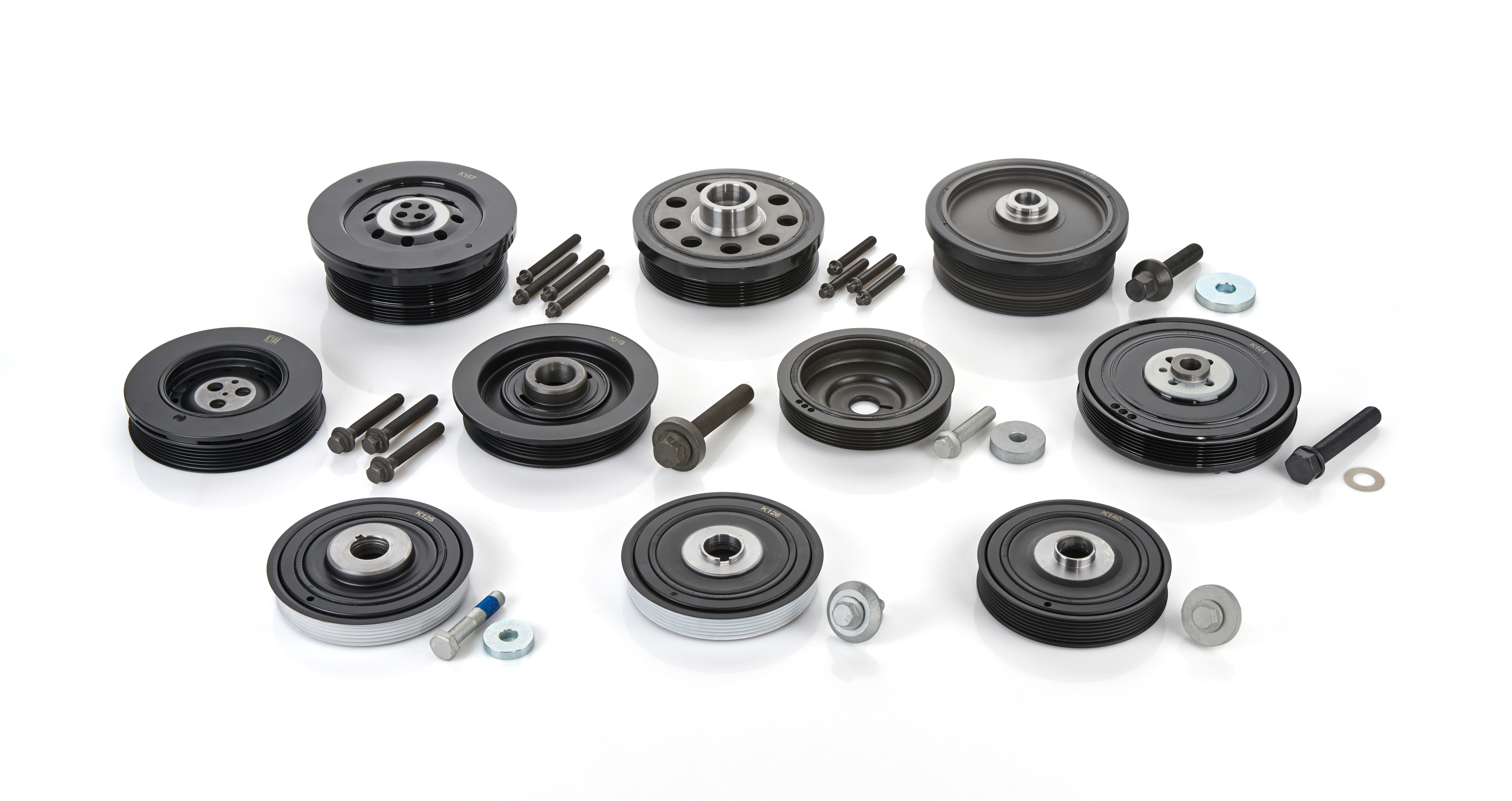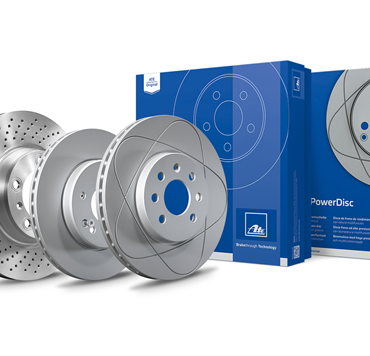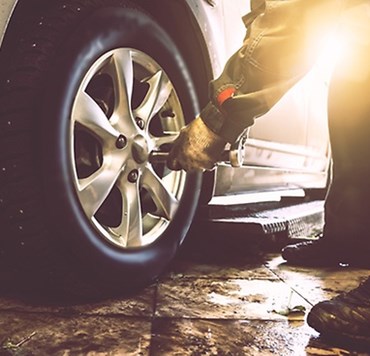In many vehicle models, torsional vibration dampers (TVDs) ensure that the multi V-belt runs smoothly. However, they can start to display signs of wear and defects over time, so regular inspection is important. We show you what has to be done.
What tasks do TVDs actually perform?
A multi V-belt transmits power from the engine to ancillary units such as the alternator, power steering hydraulic pump, air conditioning compressor, fan and the water pump – so the belt ensures the correct functioning of the engine and a high level of driving comfort. TVDs are used in many vehicles to ensure that the belts run as smoothly and with as little vibration as possible. They replace the rigid pulleys on which the multi V-belt normally rests and absorb vibrations through special elastomer elements. The result? The engine runs more smoothly and quietly, and reduced slippage also leads to longer component life. Decoupled torsional vibration dampers go one step further, completely decoupling the belt drive from the crankshaft, preventing the transmission of torsional vibrations from the crankshaft.

Defective TVDs make themselves felt
Continuous stress and environmental influences in the engine compartment cause TVD elastomer elements to harden, resulting in chipping and cracking over time. In the worst-case scenario the outer part can even become detached from the inner ring. The sure signs of a defective TVD are fluttering multi V-belts, an unsteady tensioner and increased engine noise and vibration. These all lead to faster wear of the drive components, and in extreme cases even to breakage of the crankshaft.
A note for professionals: Vehicles such as cabs, which are frequently operated at idle speed, and engines modified by chip tuning place particularly high stress on TVDs. It’s always worth taking a closer look at these vehicles.
When should an intensive TVD check be carried out?
You should always check the condition of the TVDs on all vehicles after 60,000 kilometers of operation. Are cracks visible or is the TVD deformed? Is any spalling or peeling visible? On some torsional vibration dampers, indicators on elongated holes indicate the current state of wear. However, the TVDs should always be replaced after 120,000 kilometers at the latest. This will avoid major damage to the crankshaft. It’s good to know that although TVDs can be changed, they can’t be retrofitted because they’re always specifically matched to each engine.
New – the matching screws now come with your order
Now you no longer have to separately order the matching screws for the TVD washer. Our TVD washer range now has 10 new types, and each washer is supplied with a matching fixing screw. This is because the manufacturer’s specifications often stipulate that the right screw must also be replaced along with the TVD. These special expansion screws are now included in our package, and they cover the most important applications in the market:
VD1094S e.g. for Citroen 1.6 HDi
VD1080S e.g. for Peugeot 2.0 HDi
VD1104S e.g. for Nissan 1.9 dCi
VD1002S e.g. for VW 2.TDi
VD1105S e.g. for BMW 3.0d
This VD1110S e.g. for Ford 2.0D
VD1120S e.g. for BMW 2.0d
VD1113S e.g. for Renault 1.5 dCi
VD1127S e.g. for BMW 18d
VD1031S e.g. for Opel 2.2DTI
More information about the products can be found in the PIC
Do you want to be regularly informed about exciting topics in the aftermarket? Subscribe to the newsletter




